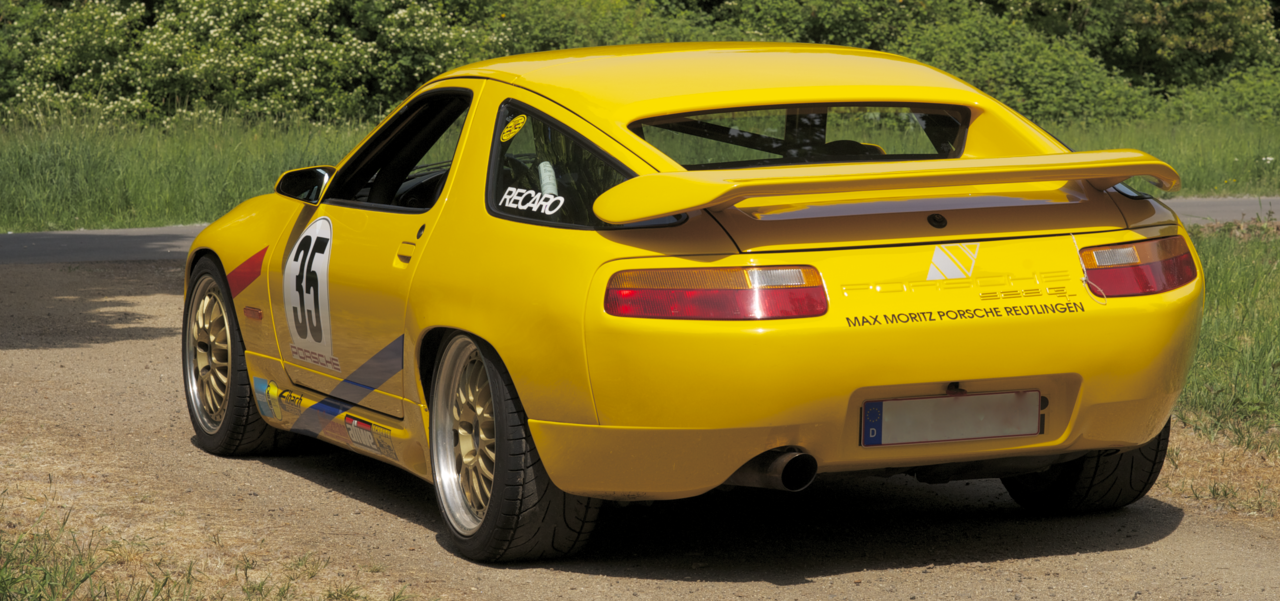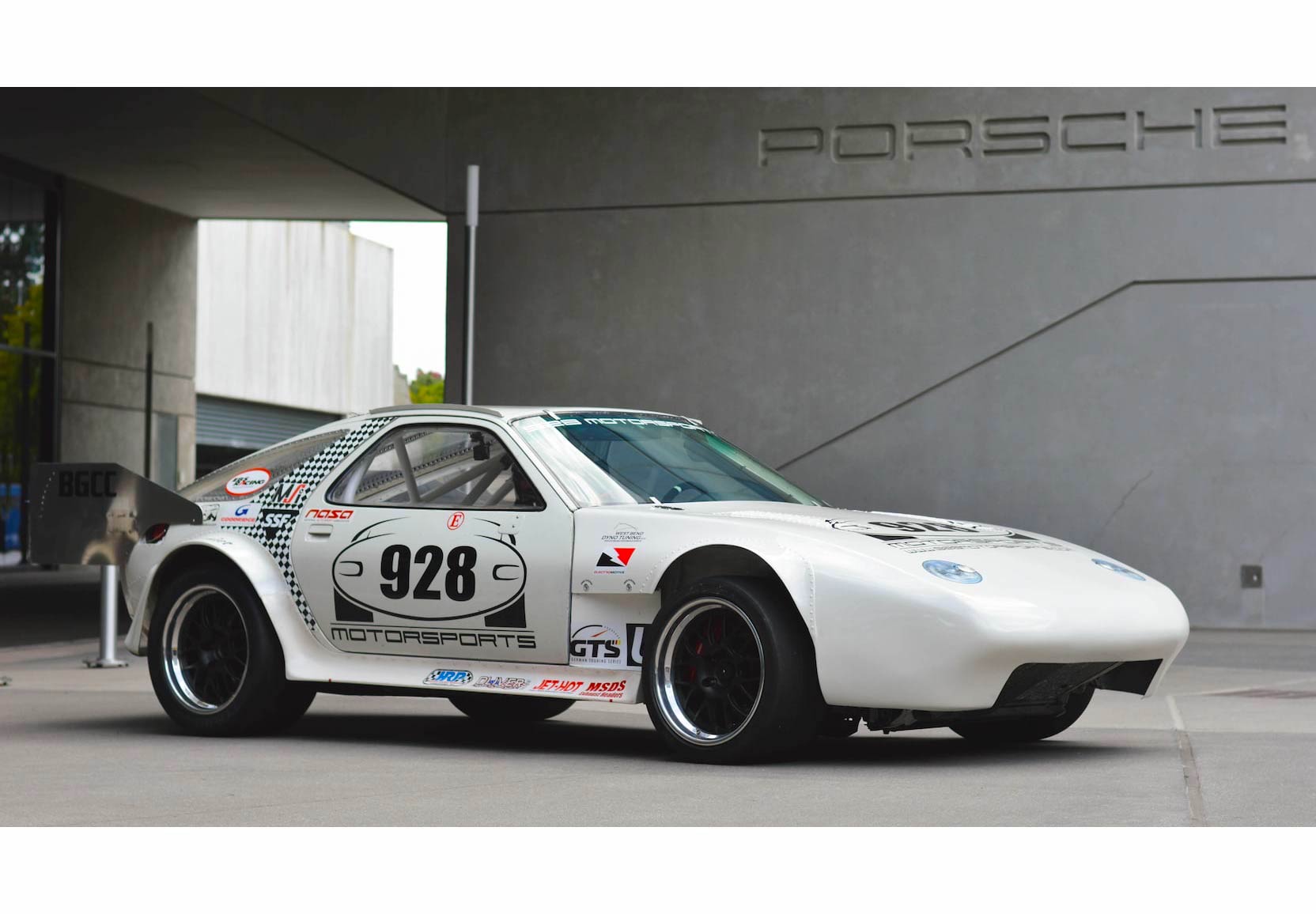Max Moritz ‘semi Works’ 928 Gtr
Share
Max Moritz ‘Semi Works’ 928 GTR: A Legend on Wheels
 The Porsche 928, initially introduced in 1978, was positioned as a grand tourer that combined performance with everyday usability. However, in the 1980s, the 928 saw the emergence of the Max Moritz ‘Semi Works’ 928 GTR, turning it into a fierce competitor on the racing scene and a beacon of engineering ingenuity. This blog post delves into the fascinating history of the Porsche 928 GTR, exploring its unique features, engineering advancements, and the impact it had on motorsport and the Porsche legacy.
The Porsche 928, initially introduced in 1978, was positioned as a grand tourer that combined performance with everyday usability. However, in the 1980s, the 928 saw the emergence of the Max Moritz ‘Semi Works’ 928 GTR, turning it into a fierce competitor on the racing scene and a beacon of engineering ingenuity. This blog post delves into the fascinating history of the Porsche 928 GTR, exploring its unique features, engineering advancements, and the impact it had on motorsport and the Porsche legacy.
The Genesis of the 928 GTR
 The Porsche 928 was designed as a replacement for the iconic 911. It featured a front-mounted V8 engine, a more spacious interior, and a focus on luxury and comfort. However, with the growing demand for performance-oriented models, Porsche sought to tap into the racing spirit that it was well-known for.
The Porsche 928 was designed as a replacement for the iconic 911. It featured a front-mounted V8 engine, a more spacious interior, and a focus on luxury and comfort. However, with the growing demand for performance-oriented models, Porsche sought to tap into the racing spirit that it was well-known for.
This led to the development of the 928 GTR under the direction of Max Moritz, a legendary figure in Porsche racing circles. The idea was to enhance the 928’s performance capabilities while maintaining its original design aesthetic. The result was the ‘Semi Works’ 928 GTR, a customized version designed for both track and street use.
Design and Features
 The Max Moritz ‘Semi Works’ 928 GTR retained the elegance of the standard 928 while incorporating aerodynamic enhancements that set it apart. The most notable modification was the addition of a wide-body kit, giving the car an aggressive stance. This increase in width improved not only aesthetics but also stability during high-speed cornering.
The Max Moritz ‘Semi Works’ 928 GTR retained the elegance of the standard 928 while incorporating aerodynamic enhancements that set it apart. The most notable modification was the addition of a wide-body kit, giving the car an aggressive stance. This increase in width improved not only aesthetics but also stability during high-speed cornering.
In terms of weight reduction, the GTR featured a mix of lightweight materials and stripped down components that led to a more dynamic driving experience. The interior was also altered to reflect its track-ready intentions, featuring bucket seats and minimalistic controls designed for quick maneuverability.
Performance Enhancements
 One of the defining characteristics of the Max Moritz 928 GTR is its performance. The car was equipped with a 5.0-liter V8 engine, tuned to deliver substantial horsepower that allowed it to compete effectively against contemporaries. The engine was paired with a manual transmission, providing a direct connection between the driver and the performance of the car.
One of the defining characteristics of the Max Moritz 928 GTR is its performance. The car was equipped with a 5.0-liter V8 engine, tuned to deliver substantial horsepower that allowed it to compete effectively against contemporaries. The engine was paired with a manual transmission, providing a direct connection between the driver and the performance of the car.
Additionally, the 928 GTR featured upgraded brakes and suspension components that enhanced its handling capabilities and stopping power. With improved grip through specially designed tires and a robust chassis, this Porsche was ready for both road and racetrack challenges.
Racing History
 The 928 GTR found great success on various motorsport platforms during its lifespan. Its participation in prestigious races showcased its performance pedigree and served to elevate Porsche's presence in the competitive landscape of the automotive world.
The 928 GTR found great success on various motorsport platforms during its lifespan. Its participation in prestigious races showcased its performance pedigree and served to elevate Porsche's presence in the competitive landscape of the automotive world.
Although the 928 itself had a reputation more oriented towards luxury and comfort, the GTR variant changed perceptions and proved that the model had the capability to compete fiercely on the racetrack.
Collectability and Legacy
As time went on, the Max Moritz ‘Semi Works’ 928 GTR became a highly sought-after vehicle among collectors and enthusiasts. Its unique performance characteristics, combined with its rarity—only a limited number were produced—added to its allure, making it a prized possession in the world of classic cars.
Today, the Porsche 928 GTR represents an important chapter in Porsche's history. It is a reminder of the manufacturer’s ability to innovate and adapt, creating models that can compete in both luxury and performance niches.
In conclusion, the Porsche 928 GTR, particularly the Max Moritz 'Semi Works' variant, embodies the spirit of Porsche’s engineering prowess and racing heritage. Its striking design, robust performance enhancements, and competitive success contribute to its legacy, making it a fascinating subject for enthusiasts and collectors alike. The world of Porsche would not be the same without icons like the 928 GTR, proving that this remarkable vehicle rightfully belongs in the pantheon of automotive history.